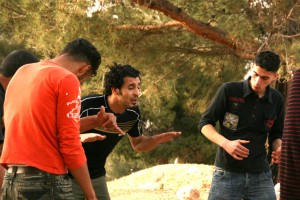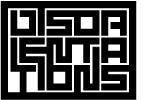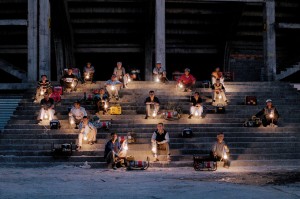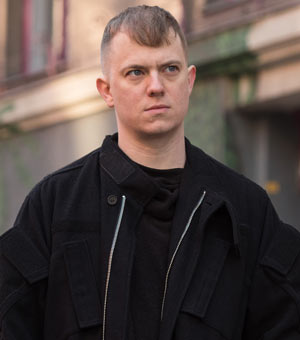8th Baltic Contemporary Art Biennial – Szczecin, Poland
by Travis Jeppesen on June 6, 2009
Armando Lulaj, Time Out of Joint
Szczecin is among the most depressing cities I’ve visited in Poland. I won’t say it’s my least favorite – that distinction would have to go to Zakopane, that overcrowded resort haven in the Tatra Mountains near the Slovak border, teeming with Russian ski tourists, bad food, and tacky souvenir shops. Szczecin is its own unique case – battered by time, it wears its scars with an indifference marked by uncertainty. It was used as a port for Berlin during the Second World War and was heavily bombed. Reconstruction continues to this day, and one can hardly call the process a success story. Scattered renewal jobs on buildings from an array of historical styles have been attempted, only to be interrupted by one communist eyesore after another, the biggest one of which is undoubtedly the main avenue running through the center of town – little more than a six-lane highway lined mostly with shops selling crap you wouldn’t want to look at, let alone buy. If Krakow is heaven and Zakopane is hell, Szczecin is truly purgatorial – you might not get killed there, but you’re not going to have the time of your life, either.
Just as the city seems to be struggling to evolve a coherent identity, so a sense of displacement haunts the latest Baltic Contemporary Art Biennial. A struggle to not forget while surviving. In this sense, Adrian Paci’s short film Turn On captures the mood perfectly. Shot in the artist’s native Albania, the film consists of a series of close-ups of the faces of a group of middle-aged men who seem tired and weathered by waiting. The film then moves to a distant shot, allowing us to see that the men are seated on the steps of a worn, abandoned building. Each holds a lightbulb attached to a power generator. It is a simple, but powerful metaphor of waiting to catch up to the speed of the rest of the world, yet feeling the threat of being left behind forever. It gives us an acute sense of time’s cruelty.
 Joanna Rajkowska, Camping Jenin
Joanna Rajkowska, Camping Jenin
The chosen artists’ concerns are largely political – hence, the documentary mode is quite heavy. Joanna Rajkowska’s Camping Jenin documents a theater workshop for young men in a Jenin refugee camp on Jordan’s west bank. All of the men had their childhoods shattered somehow by violence, having witnessed their families and close friends get killed; most of them struggle from post-traumatic stress syndrome. The workshop thus becomes a therapeutic way for them to re-build their lives while addressing the source of their pain. The most fascinating documentary work, however, can be found in Kalle Hamm and Dzamil Kamanger’s excavationary approach to Afaryan, which poignantly explores an abandoned Kurd village in Iran through the memories of its former inhabitants.
The work is not all so heavy and literal. Johan Muyle’s motorized sculptures, which look like they were concocted with materials found at a flea market, are fun and random and deranged, while Armando Lulaj’s Kafka-esque Time Out of Joint shows us what happens when a large block of ice mysteriously appears in the middle of a rubbish dump outside of Tirana.
The Baltic Biennial is actually much smaller than its name implies – and this is its strong point. It designates a path that is quite manageable, and allows the casual visitor to devote much more time to individual works than at most biennials. In this, curators Magdalena Lewoc and Marlena Chybowska-Butler have done an adequate job of condensing the biennial to fit the scale and feel of Szczecin itself – a place way off the beaten path that has nevertheless been severely beaten.
Adrian Paci, Turn On
The Baltic Biennial of Contemporary Art runs through July 12, 2009.




Leave your comment